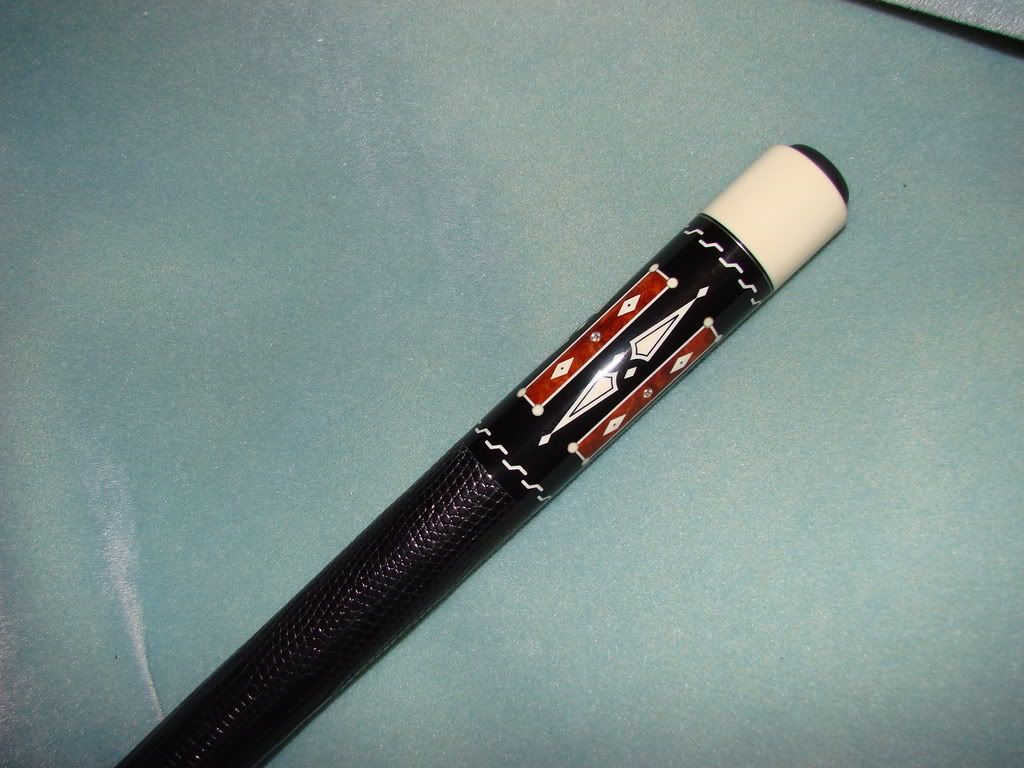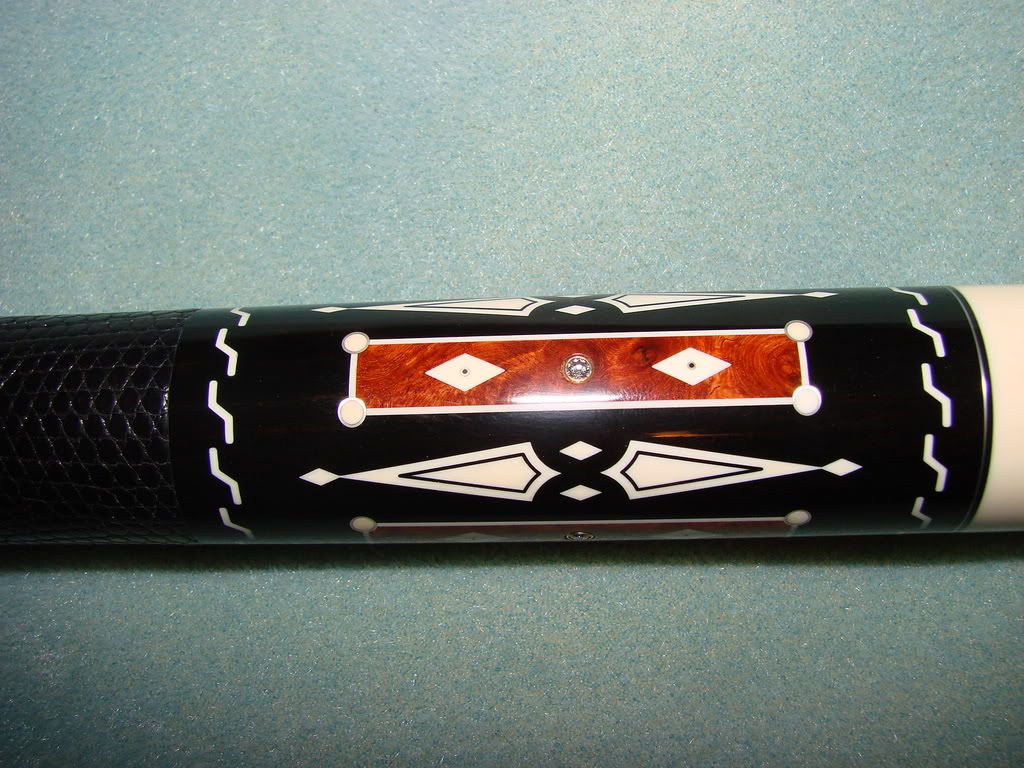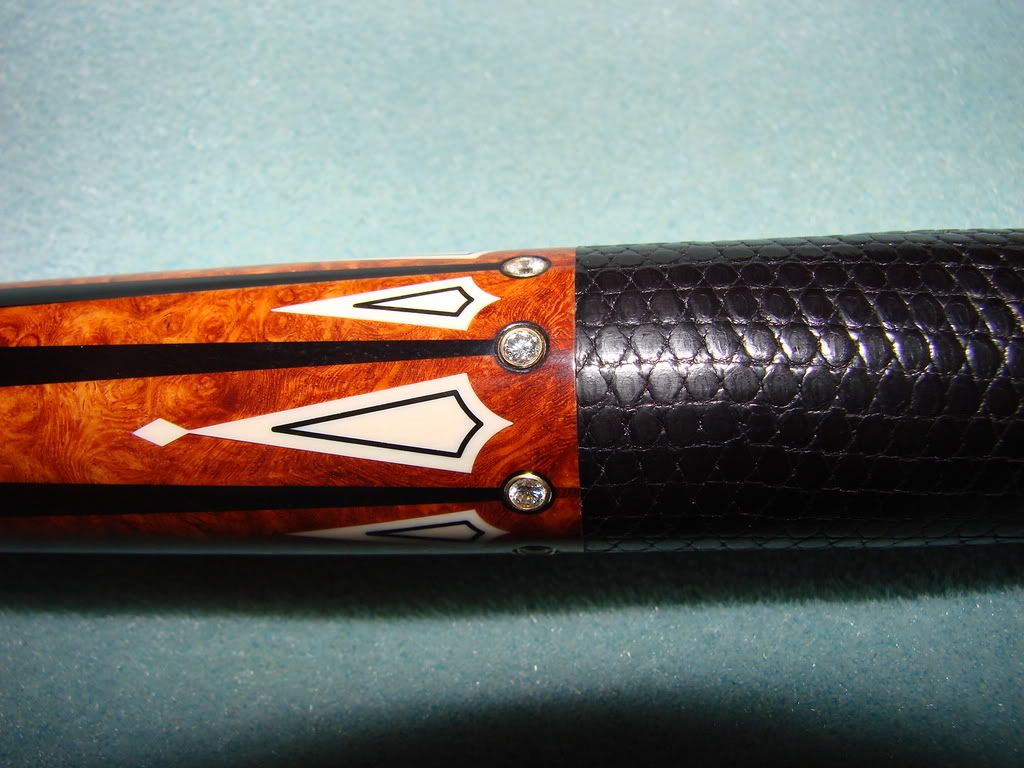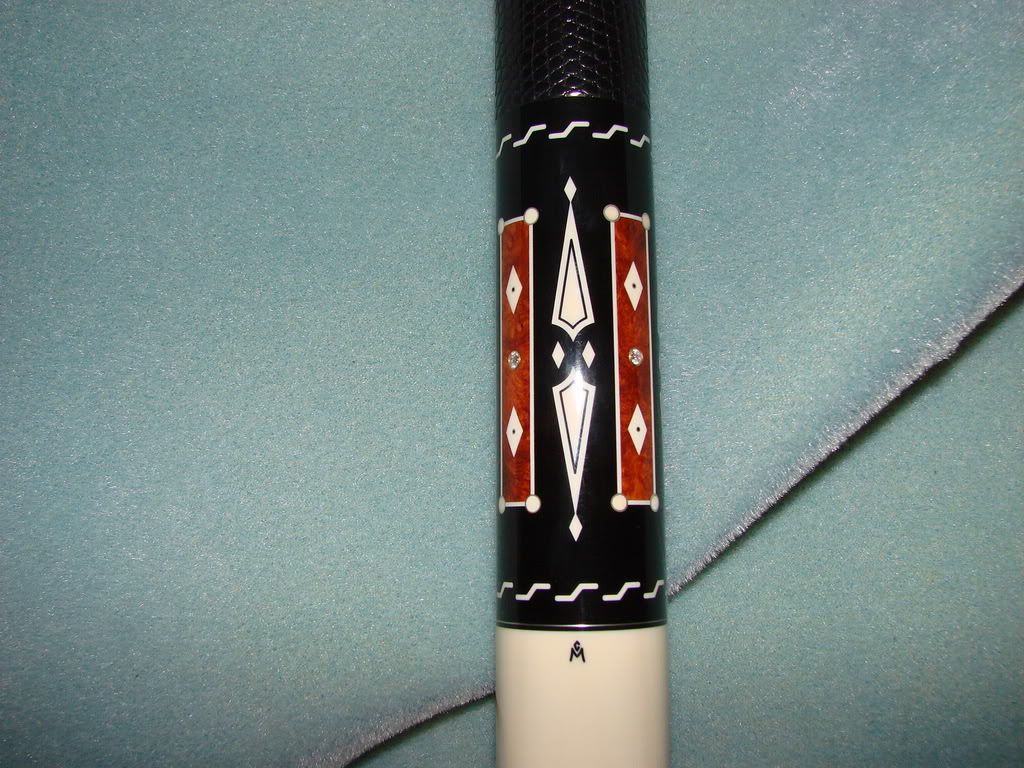You are using an out of date browser. It may not display this or other websites correctly.
You should upgrade or use an alternative browser.
You should upgrade or use an alternative browser.
jewel inlays...
- Thread starter jcs003
- Start date
I'm not so sure about setting a gem into wood, but I have a small green stone set into a butt cap in a Huebler that was there when I got it.
It hasn't fallen out yet.
It hasn't fallen out yet.
There will be no light coming through the stone. Therefore a very well cut stone, will look like a lifeless white rock...JER
light reflection
There will be no light coming through the stone. Therefore a very well cut stone, will look like a lifeless white rock...JER
the light doesn't come from underneath a diamond, light enters from the top, reflects off the bottom facets twice then returns out the top. so set correct a diamond will shine great set into a cue.
i am a jeweler and wanted diamonds set into a cue hightower was building for me. i found 4,1/4 carat champagne color diamonds, a total of 1 carat and chris set them into ivory spears, the light brown color of the diamonds looked great on the very white ivory.
imo a white [ clear ] stone set into white color wood will not look very good, but set them into ebony and with the contrast in color they will look great. they can be set directly into the wood or first set in a gold bezel then set the bezel into the wood. its best if you have a diamond setting bur to cut the hole, a very small drop of sg to hold it in place while you put the finish on. once they are underneath the finish they are very secure. chuck starkey
There will be no light coming through the stone. Therefore a very well cut stone, will look like a lifeless white rock...JER
the light doesn't come from underneath a diamond, light enters from the top, reflects off the bottom facets twice then returns out the top. so set correct a diamond will shine great set into a cue.
i am a jeweler and wanted diamonds set into a cue hightower was building for me. i found 4,1/4 carat champagne color diamonds, a total of 1 carat and chris set them into ivory spears, the light brown color of the diamonds looked great on the very white ivory.
imo a white [ clear ] stone set into white color wood will not look very good, but set them into ebony and with the contrast in color they will look great. they can be set directly into the wood or first set in a gold bezel then set the bezel into the wood. its best if you have a diamond setting bur to cut the hole, a very small drop of sg to hold it in place while you put the finish on. once they are underneath the finish they are very secure. chuck starkey
here is mine with REAL Diamonds in gold bracletts
Here are my biggest McDaniel, the LAST McDaniel with Real Diamonds.






Enjoy it,
Ralf:wink:
Here are my biggest McDaniel, the LAST McDaniel with Real Diamonds.






Enjoy it,
Ralf:wink:
im in the process of designing my custom cue and want to add manufactured diamonds as inlays.(homage to my profession). anyway, is this an easy task or more aggervation than its worth?
thanks,
john
John contact Chris Hightower here on the forum, he has made a number of cues with inlays like you are describing I am certain he can tell you what you need to know.
JIMO
The readon diamonds are placed into settings as shown in photoi, to allow light to pass through and show its true brillance.
This is not exactly true. When properly cut light does not pass through a diamond. This is what is called total internal reflectivity
TIR and the Sparkle of Diamonds
Relatively speaking, the critical angle for the diamond-air boundary is an extremely small number. Of all the possible combinations of materials that could interface to form a boundary, the combination of diamond and air provides one of the largest differences in the index of refraction values. This means that there will be a very small nr/ni ratio and subsequently a small critical angle. This peculiarity about the diamond-air boundary plays an important role in the brilliance of a diamond gemstone. Having a small critical angle, light has the tendency to become "trapped" inside of a diamond once it enters. A light ray will typically undergo TIR several times before finally refracting out of the diamond. Because the diamond-air boundary has such a small critical angle (due to diamond's large index of refraction), most rays approach the diamond at angles of incidence greater than the critical angle. This gives diamond a tendency to sparkle. The effect can be enhanced by the cutting of a diamond gemstone with a strategically planned shape. The diagram below depicts the total internal reflection within a diamond gemstone with a strategic and a non-strategic cut.
TIR and the Sparkle of Diamonds
Relatively speaking, the critical angle for the diamond-air boundary is an extremely small number. Of all the possible combinations of materials that could interface to form a boundary, the combination of diamond and air provides one of the largest differences in the index of refraction values. This means that there will be a very small nr/ni ratio and subsequently a small critical angle. This peculiarity about the diamond-air boundary plays an important role in the brilliance of a diamond gemstone. Having a small critical angle, light has the tendency to become "trapped" inside of a diamond once it enters. A light ray will typically undergo TIR several times before finally refracting out of the diamond. Because the diamond-air boundary has such a small critical angle (due to diamond's large index of refraction), most rays approach the diamond at angles of incidence greater than the critical angle. This gives diamond a tendency to sparkle. The effect can be enhanced by the cutting of a diamond gemstone with a strategically planned shape. The diagram below depicts the total internal reflection within a diamond gemstone with a strategic and a non-strategic cut.
Diamonds are ususally set in open mounts for cleaning and to accent the stone itself. Bill chose to use a bezel setting for the stones in this cue and did set them afte the finish was applied as the finish would dull the light some. I'm don't remember for sure but I believe he used a closed bezel mount so the glue would not come up around the stone.
here is mine with REAL Diamonds in gold bracletts
Here are my biggest McDaniel, the LAST McDaniel with Real Diamonds.






Enjoy it,
Ralf:wink:
Showoff:thumbup:
To me Ivory is king for setting stones into. That is unless you want to put it into a jewel setting and drop that into a pocket. It is not easy, but definitely can be done to look nice. When glued in the glue on the back and finish over the top of the stones, it seems to make them look more like glass than brilliant stones. Chuck Starkey showed me his old cue with a stone surface mounted with no finish over it in a professional setting. He is a jeweler and it looked great. But when I built a cue for him I set it in finish and it turned out pretty nice. I think those were some of my first stones. Since then I have put hundreds of stones like emeralds, sapphires, rubies and such in cues. Cutting a pocket that matches your stone is tricky and hard to do without a CNC machine. The little burs that are shaped like stones need to be spun pretty slow to not burn them up when used in ivory or wood. They work great on silver and such at higher speeds.
My advice to get them looking perfect is to send the stones to a jeweler like Chuck and have them mounted in a round silver setting. Then you can machine your round hole to drop them into without any problem and they will get the silver reflection from the back side and look pretty good no matter what you put them into. Put a single drop of bubble free clear coat over the top of each stone and fill up the voids with that method before putting your flow out coats on. You have to set them just barely below the surface so that they will not come through the finish.
My advice to get them looking perfect is to send the stones to a jeweler like Chuck and have them mounted in a round silver setting. Then you can machine your round hole to drop them into without any problem and they will get the silver reflection from the back side and look pretty good no matter what you put them into. Put a single drop of bubble free clear coat over the top of each stone and fill up the voids with that method before putting your flow out coats on. You have to set them just barely below the surface so that they will not come through the finish.